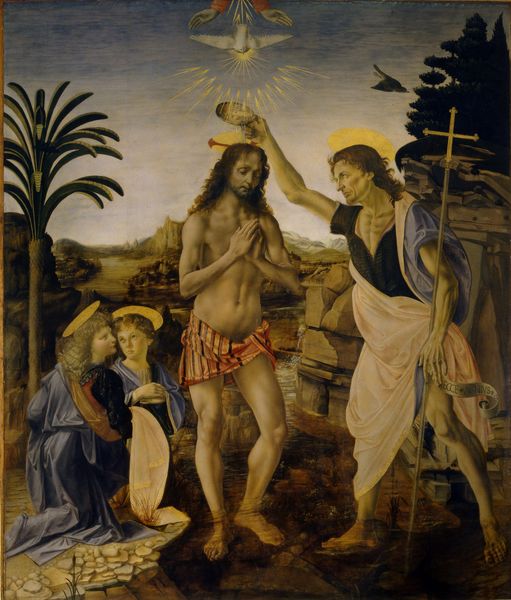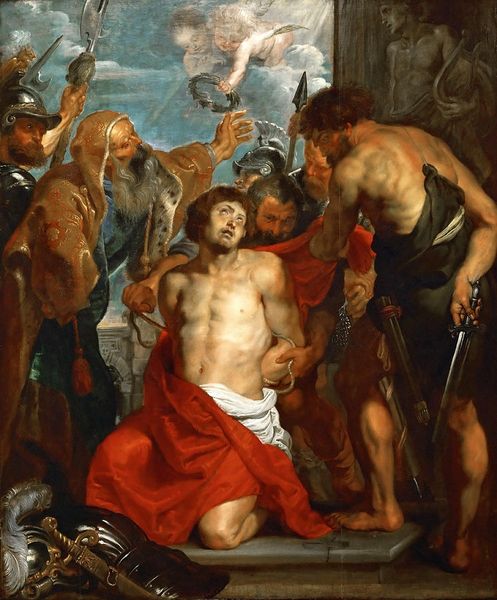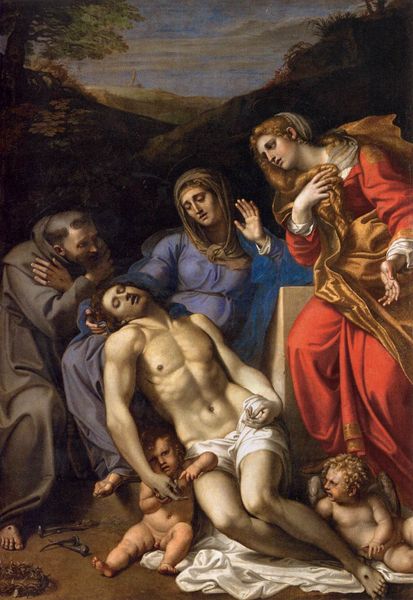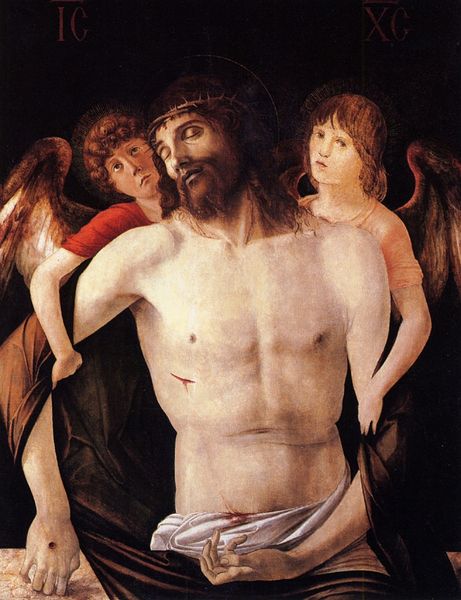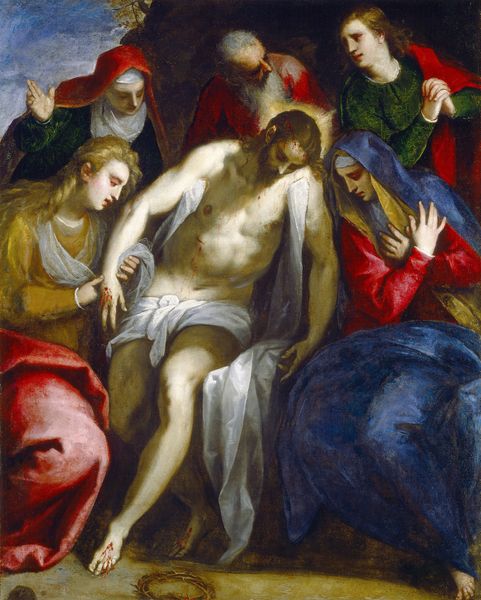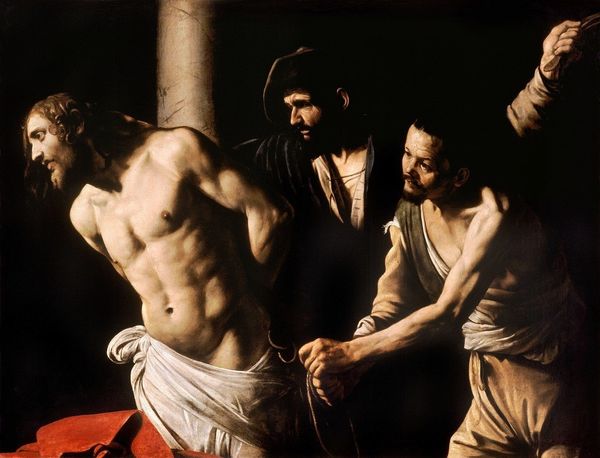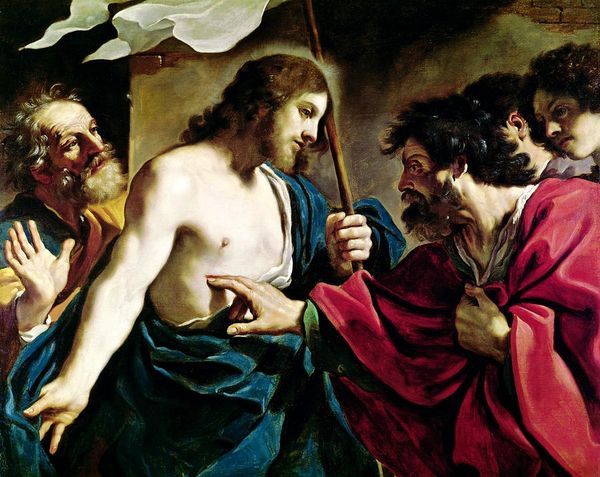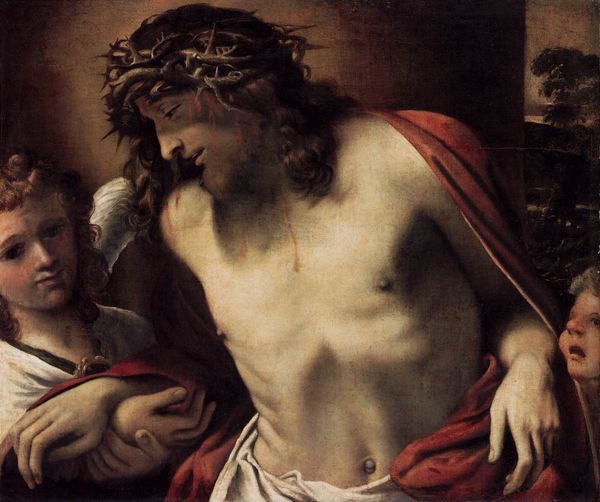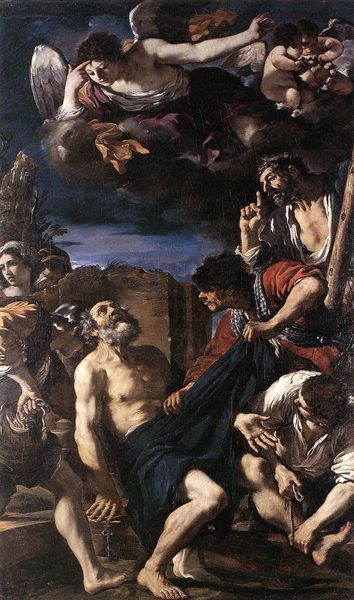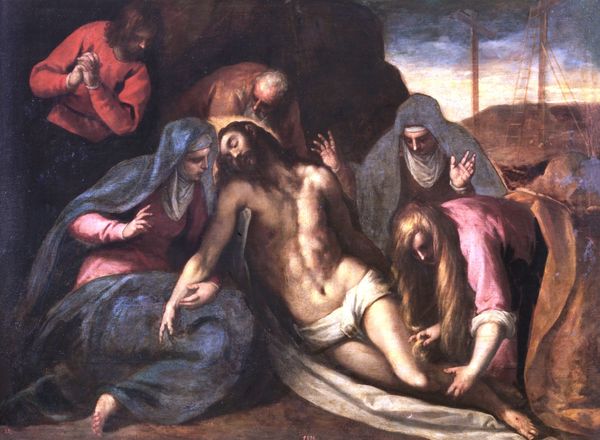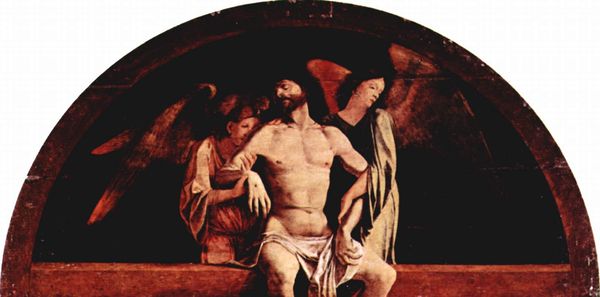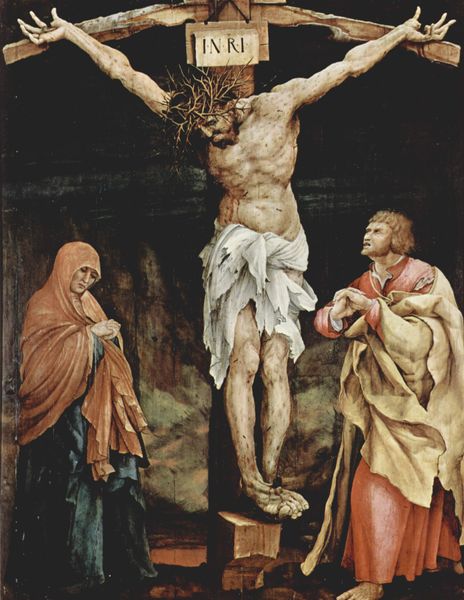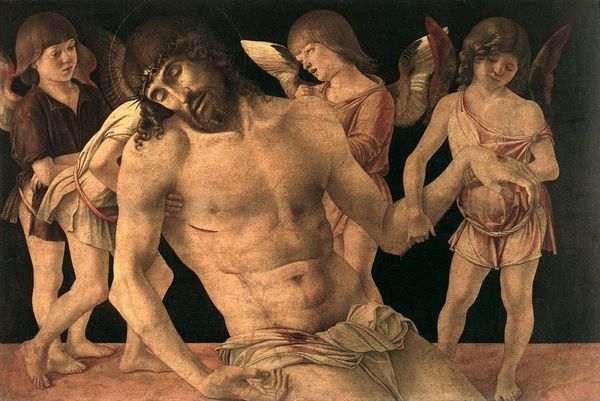
painting, oil-paint
#
portrait
#
painting
#
oil-paint
#
figuration
#
christianity
#
history-painting
#
italian-renaissance
#
early-renaissance
#
christ
Dimensions: 228 x 175 cm
Copyright: Public domain
Curator: Welcome. Before us hangs Andrea Mantegna’s “The Baptism of Christ,” an oil painting from approximately 1506. What are your first thoughts? Editor: Well, the color palette is unexpectedly muted, almost sepia-toned. It lends a certain solemnity, I think, a sort of faded grandeur. Curator: Mantegna painted this during the Italian Renaissance, and though some scholars categorize him as an Early Renaissance artist, the intense emotion of his compositions—especially the expressive faces of the figures, and even their musculature—places him as a pivotal figure between the Early and High Renaissance. The historical importance of Christ’s baptism is underscored by a serious depiction and setting. Editor: There’s almost a theatrical staging to it, isn't there? John the Baptist poised mid-pour, Jesus positioned to receive the water… It feels less like a candid moment and more like a carefully orchestrated tableau. I suppose you could say the dramatic chiaroscuro adds to the scene's formality and grandness. The figures are illuminated by a divine spotlight—it could easily be repurposed in an opera. Curator: Precisely! Note the dove descending above Christ, a symbol of the Holy Spirit. Such visual cues would have resonated deeply with the contemporary audience. Beyond its religious symbolism, the image, like all art, reinforced hierarchical social norms and gender expectations in Early Renaissance Europe. Editor: You can almost feel the cool water, and sense that chill of transformation hanging in the air… That, or maybe I’m just thinking of how damp cathedrals always felt. What a time to be alive. But jokes aside, it makes me wonder about Mantegna. Did he intend this gravity, this austere mood, or was it simply how the style presented? It seems rather lacking of a painterly *joie de vivre* like a Botticelli or something. Curator: It could have been intended; as art began its transition toward appealing to upper society during this time, painting took on a more serious tone and high aesthetic quality than the preceding period, as one might compare sacred Medieval painting and art made later on. But of course that seriousness also would make the artwork valuable in the markets as well. Editor: It makes you think, doesn't it? This dialogue between spirituality, representation, patronage… Art then, and even art now, has such incredible potential. Curator: It does indeed. Thank you for helping explore the many depths this work offers.
Comments
No comments
Be the first to comment and join the conversation on the ultimate creative platform.
